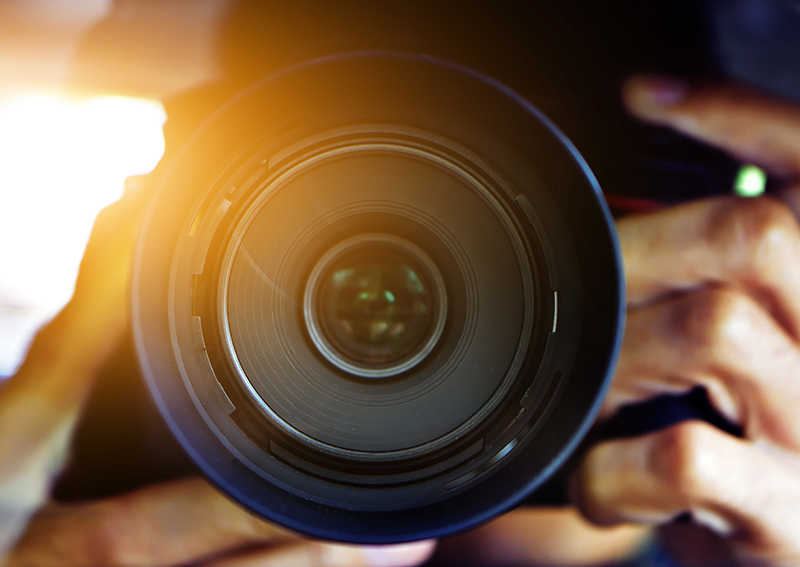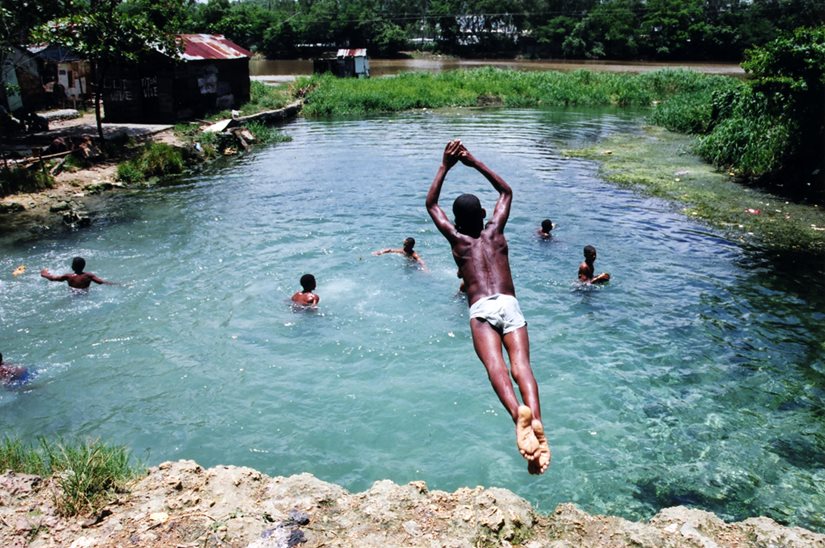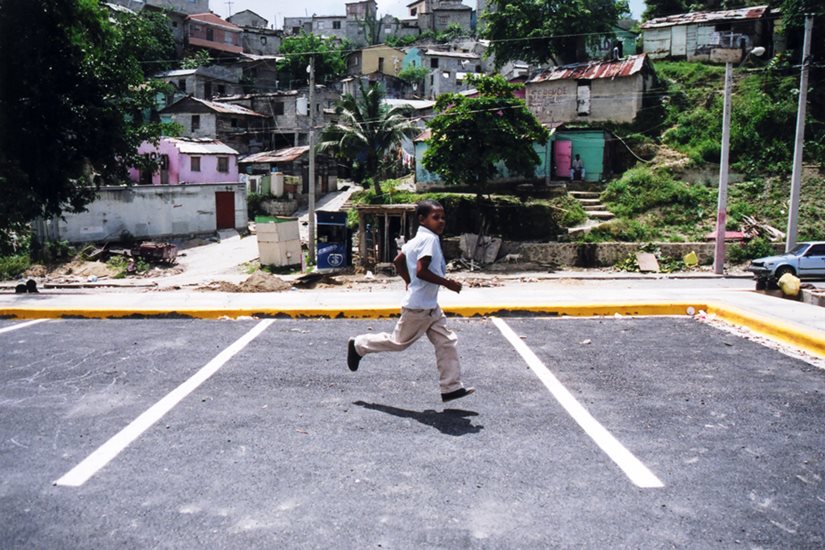
Since the emergence of smartphones, photography has become a ubiquitous part of our lives.
Gone are the days of dropping off a roll of film to get developed and hoping that your pictures turn out okay. Now almost all of us carry a camera in our pockets, and we can take as many photos as we’d like whenever we’d like.
You’d think this would decrease the need for professional photographers in our world, but the reality is quite the opposite.
“The fact that the iPhone cameras have gotten so good reinforces how being a good photographer is more about a way of seeing than just having a camera,” said Bernadette Johnston, instructor in the UC San Diego Division of Extended Studies Photography: Images and Techniques Program.
“We're constantly inundated with all these images. It puts more pressure on photographers for what they can create that is going to be more interesting than the next person,” Johnston continued.
It could even be argued that despite photography becoming more accessible, the value of a good photographer has increased. We need quality images to cut through the noise and keep up with expectations. This has opened up the need for photographers in so many new aspects of our world.
So whether you’re an aspiring professional, or you just want to take photography more seriously as a hobby, how does one get better at taking photographs that will stand out? We talked with Bernadette Johnston about what makes a good photographer and how we can all improve.
What makes a good photographer?
We’re all exposed to quality photography every single day. It might be in an advertisement, an art piece, or a picture that appears alongside a news article. Most of us can see that these are better photos than we might have taken with our phones, but we’d be wrong to assume that it’s simply an upgraded camera at work.
“There's a quote I have on my desk from photographer Olivia Bee that says, ‘It's way more important to know how to take a picture than it is to use a camera,’” said Johnston. “I find this to be very true. Photography is more about a way of seeing and translating that into an image. Having a good camera doesn’t do that for you automatically. You have to train your eye to see things in an interesting way.”
So what does it take to see the world through this lens and take the kinds of pictures that will stand out?
Four elements of good photography
Johnston detailed the four primary elements of good photography that can create compelling images; light, composition, timing, and gesture/expression. Let’s review these elements in detail to get a stronger sense of what they mean.
1. Lighting

On a basic level, lighting is important because it’s how we illuminate the aspects of our images. Anyone who has ever taken a backlit photo of a loved one in front of a sunset realizes that you need to have the light shining on the person, not behind them. But that’s just the basics. There’s much more to it than that.
“The word ‘photography’ means ‘drawing with light.’ It's important as a photographer to have a good understanding of light and the way the light is coming into the image,” said Johnston. “Is it dramatic light shining directly or from an angle? Or is it a softer, more diffused light? Those are going to create really different moods in your images.”
Lighting can be natural or artificial. It can be flush and fully illuminate the subject, or it can be more sparse and leave aspects of the image in the shadows. There can also be different colors within the lighting.
Warm lighting with yellow and orange tints can create a more dramatic and intimate feeling. This is why portrait photographers like to take outdoor images during the “golden hour” right before sunset. Cooler lighting with blue and white tints can create a more direct or sterile atmosphere.
“In my classes, we learn about lighting in great detail. We cover all the different lighting scenarios, and I have my students create all of these to see for themselves,” said Johnston.
2. Composition
.jpg.aspx?width=825&)
“Composition has to do with the way that you organize or arrange the visual elements in the photo,” Johnston explains. “When you're photographing someone in a situation, you're not only aware of what the person is doing and their actions, you're also aware of the elements around them and how those line up in the photo.”
This can mean the way elements are balanced on each side of the image, how the elements are arranged to create depth or rhythm, or the angles you choose from which to take the photos.
“I think sometimes people get distracted by the subject matter or the action, and they don't think about the full composition of the photo,” said Johnston. “A skilled photographer will be looking at all of the elements of composition. They’ll move around in order to line up the subject with the environment in a way that would be compelling.”
To practice composition, Johnston recommends a simple exercise that she does with both adults and kids.
“A great way for a new photographer to learn composition is to start with a little rectangular cutout out of paper, and then hold it up and try to find images through that rectangle that you find interesting.”
3. Timing

You might think that, in the digital world, timing when you take pictures wouldn’t be as important anymore. After all, you can take a whole series of images and sort it out later, right?
While there is some truth to that, there are still a lot of important things to consider when timing a photograph.
“As photographers, we’re basically observers. We're deciding what moments are worthy of capturing and sharing,” said Johnston. “We all have a different perspective, too. You could have five photographers shoot an event and none will necessarily have the same moment captured.”
Having all the different images and sorting through them after the fact is important too.
“The time that you go through the photos is just as important as the time that you're taking the photos,” Johnston said. “You could take hundreds of photos but if you don't have the knowledge to know which one is the best shot, you might pick a different one and not end up with as strong of an image as you could have had.”
4. Gesture / Expression
.jpg.aspx?width=825&)
The last aspect of good photography is the gesture or expression of the subject you’re photographing.
“The expression a person has can totally change the meaning of the photograph,” said Johnston. “Whether they're staring intently into the camera, laughing, or engaged in an activity, this will obviously be important for the impression the image leaves on the viewer.”
This is an aspect of photography where the photographer will have to be especially conscientious of the role they’re playing, too.
“One really important element of gesture is knowing how to interact with your subject,” added Johnston. “Sometimes that's providing guidance. Sometimes that means stepping back and letting things unfold.”
This can be the difference between a photographer in the studio being very interactive with their subject, versus a photographer at a wedding or other event that will want to stay in the background relatively undetected.
“Based on which of those you choose, you're going to get more natural versus more contrived expressions in their poses,” said Johnston. “It's important to know what you want and when to step in versus when to step back.”
The Decisive Moment

The importance of all these elements of photography can be seen when they all come together in what is called the “decisive moment.”
The term was coined by a French photographer, Henri Cartier-Bresson, when he wrote the book “Henri Cartier-Bresson: The Decisive Moment.”
“The idea is when all of the aesthetic elements are present in an image, and you capture them at the peak of when they come together,” said Johnston. “That's what creates an image that has impact. It has an emotional effect that people react to.”
Is having an eye for photography teachable?
This all might sound nuanced and hard to teach, but Johnston has found some ways that are helpful for her courses.
A significant portion of Bernadette’s courses is devoted to “looking at different photographers' work and talking about these elements as they appear in the images,” she said. “When you look at an image and you really analyze it, you can get so much out of it. It's almost like you’re writing one line and that's all you have to tell a story.”
Critiquing each other's work is another important element of her courses, too.
“Looking at each other's work as a class and having students have an opportunity to give and get feedback from their classmates is a key part of the experience,” said Johnston. “It's hard to grow if you're not getting feedback from other people.”
Lastly, Johnston has some advice for budding photographers.
“I think if you're studying photography, it’s important to have other subjects you study, too. The inclusion of that extra field of study is going to inform your photography. You're not just living in the art world or the journalism world. You have a broader context through which to share photos. I think that's important,” she shared.
Learn more about Bernadette Johnston and her photography at https://narrativestudios.com and https://narrativeimagesphoto.com.
—-
If you’re interested in learning more about the Photography: Images and Techniques Program at UC San Diego Division of Extended Studies, please visit our program webpage or reach out to the Arts, Humanities, Languages & Digital Arts department at 858-534-5760 or ahl@ucsd.edu.